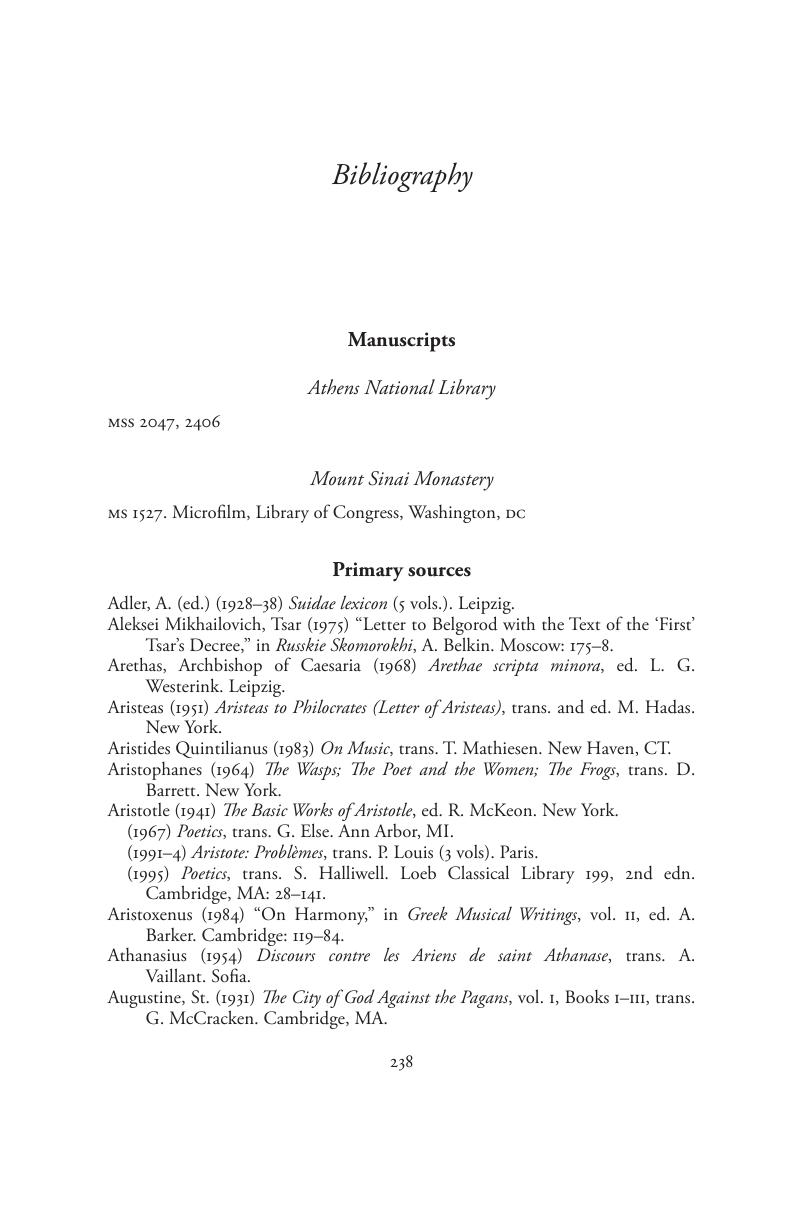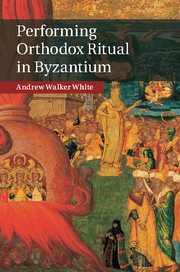Book contents
- Performing Orthodox Ritual in Byzantium
- Performing Orthodox Ritual in Byzantium
- Copyright page
- Contents
- Figures
- Music examples
- Book part
- Introduction
- Part I Byzantine spatial, performance, and musical practices
- Part II A study of the Service of the Furnace
- Conclusion
- Appendices
- Glossary
- Bibliography
- Index
- References
Bibliography
Published online by Cambridge University Press: 05 October 2015
- Performing Orthodox Ritual in Byzantium
- Performing Orthodox Ritual in Byzantium
- Copyright page
- Contents
- Figures
- Music examples
- Book part
- Introduction
- Part I Byzantine spatial, performance, and musical practices
- Part II A study of the Service of the Furnace
- Conclusion
- Appendices
- Glossary
- Bibliography
- Index
- References
Summary

- Type
- Chapter
- Information
- Performing Orthodox Ritual in Byzantium , pp. 238 - 271Publisher: Cambridge University PressPrint publication year: 2015



